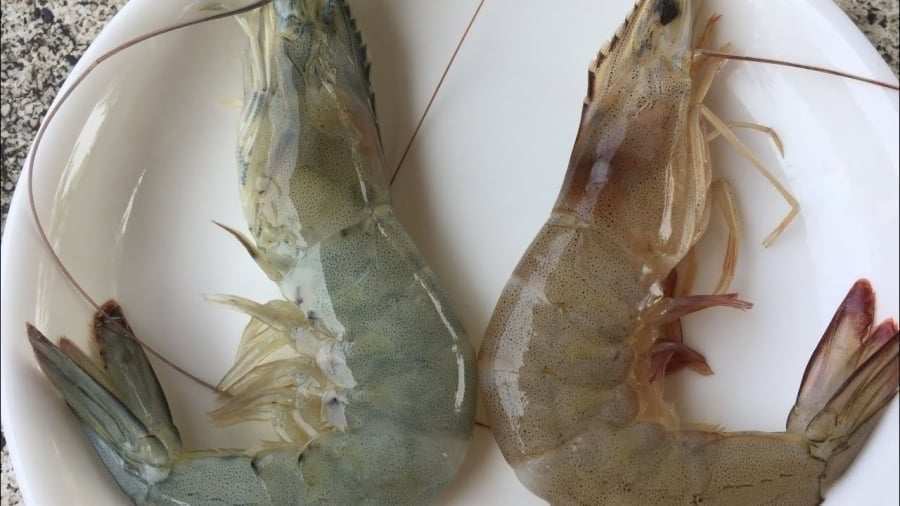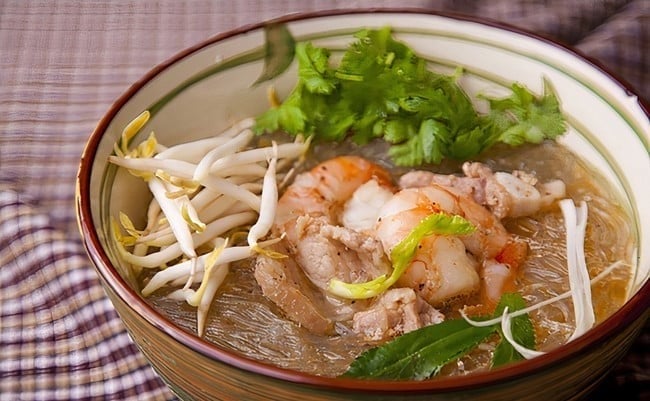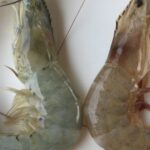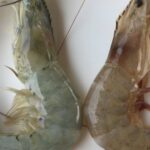Shrimp is a nutritious food, especially high in calcium, and a common dish in family meals. Wild-caught shrimp tends to have sweeter, firmer, and more flavorful meat compared to farmed shrimp.
However, distinguishing between farmed and wild-caught shrimp is not always easy. Thankfully, with a simple tip shared by longtime shrimp sellers, you can learn how to identify the type of shrimp accurately.
How to Distinguish Between Farmed and Wild-Caught Shrimp
When shopping for shrimp, many people don’t pay attention to how to select them properly. However, wild-caught shrimp is usually more expensive than farmed shrimp, so some dishonest sellers may try to pass off farmed shrimp as wild-caught to make a higher profit.
To avoid being misled, you should know how to tell the difference. Farmed shrimp typically have a darker shell, softer meat, and lack a distinct natural sweetness. In contrast, wild-caught shrimp have brighter shells, firmer meat, and a characteristic sweet taste.

When choosing fresh shrimp, look for those with hard shells, bright colors, agile movements, and intact legs. The meat inside should be firm and attached to the shell. Avoid shrimp with dull white shells, cloudy or pale pink eyes, stiff and unevenly sized bodies, detached heads, slimy liquid, or black legs.
If you’re buying pre-cooked shrimp, inspect the tail. Straighten the shrimp and hold it up to the light. If there is a noticeable gap between the shell and the meat at the joints, it likely indicates overcooking or prolonged freezing, suggesting that the shrimp is not as fresh.
Knowing these signs will help you select fresh and tasty shrimp, ensuring you get the best natural flavor.
Delicious Shrimp Recipes
Shrimp and Glass Noodle Soup
For a delicious twist on your regular shrimp dishes, try making shrimp and glass noodle soup for breakfast or dinner. It’s easy to prepare:
Step 1: Peel and devein the shrimp.
Step 2: Sauté chopped onion, ginger, white part of green onion, and minced garlic in a pan. Add the shrimp and cook until they turn pink. Remove from heat.
Step 3: In a clean clay pot, layer the glass noodles at the bottom, followed by the shrimp and mushrooms. Season with salt, pepper, soy sauce, and cooking wine to taste. Cook for about 5-7 minutes, and your delicious soup is ready to be enjoyed!

Sour Tamarind Shrimp
Sour tamarind shrimp is a family favorite, combining the sweet natural taste of shrimp with the tangy flavor of tamarind. Here’s how to make it:
Step 1: Clean and prepare the shrimp. Chop some spring onions, mince shallots and garlic.
Step 2: Soak tamarind in warm water for 15 minutes. Strain the mixture and mix the tamarind water with sugar, salt, MSG, fish sauce, and pepper to taste.
Step 3: Fry the shrimp until they turn golden. Be careful not to overcook them.
Step 4: Sauté the shallots and garlic. Add the shrimp to the pan and pour the tamarind mixture over them. Stir well and let the sauce thicken. Turn off the heat and serve.
Shrimp in Fermented Bean Curd Sauce
This traditional and easy-to-make dish is a delicious addition to any family meal:
Step 1: Clean the shrimp and remove the antennae, legs, and vein.
Step 2: Steam a small bowl of shrimp roe with lemon juice, fish sauce, sugar, and oil. Mix well.
Step 3: Fry the shrimp until they are golden on both sides. Mix the shrimp with the roe, minced garlic, seasoning powder, sugar, and pepper. Stir well.
Step 4: Put the mixture in a pot, add coconut water, and simmer for about 20 minutes until the sauce thickens. Serve and enjoy!
These shrimp recipes are not only delicious but also easy to prepare, adding variety and excitement to your family meals.
“The Ultimate Guide to Telling Farmed and Wild Shrimp Apart: A Shrimp Seller Spills the Beans”
Shopping for shrimp can be a tricky business, and distinguishing between farmed and wild-caught shrimp is no easy task. There are, however, some simple tips and tricks to help you become a shrimp-buying pro and ensure you always make the best choices. It’s time to unravel the mysteries of shrimp and become a savvy shopper!






































